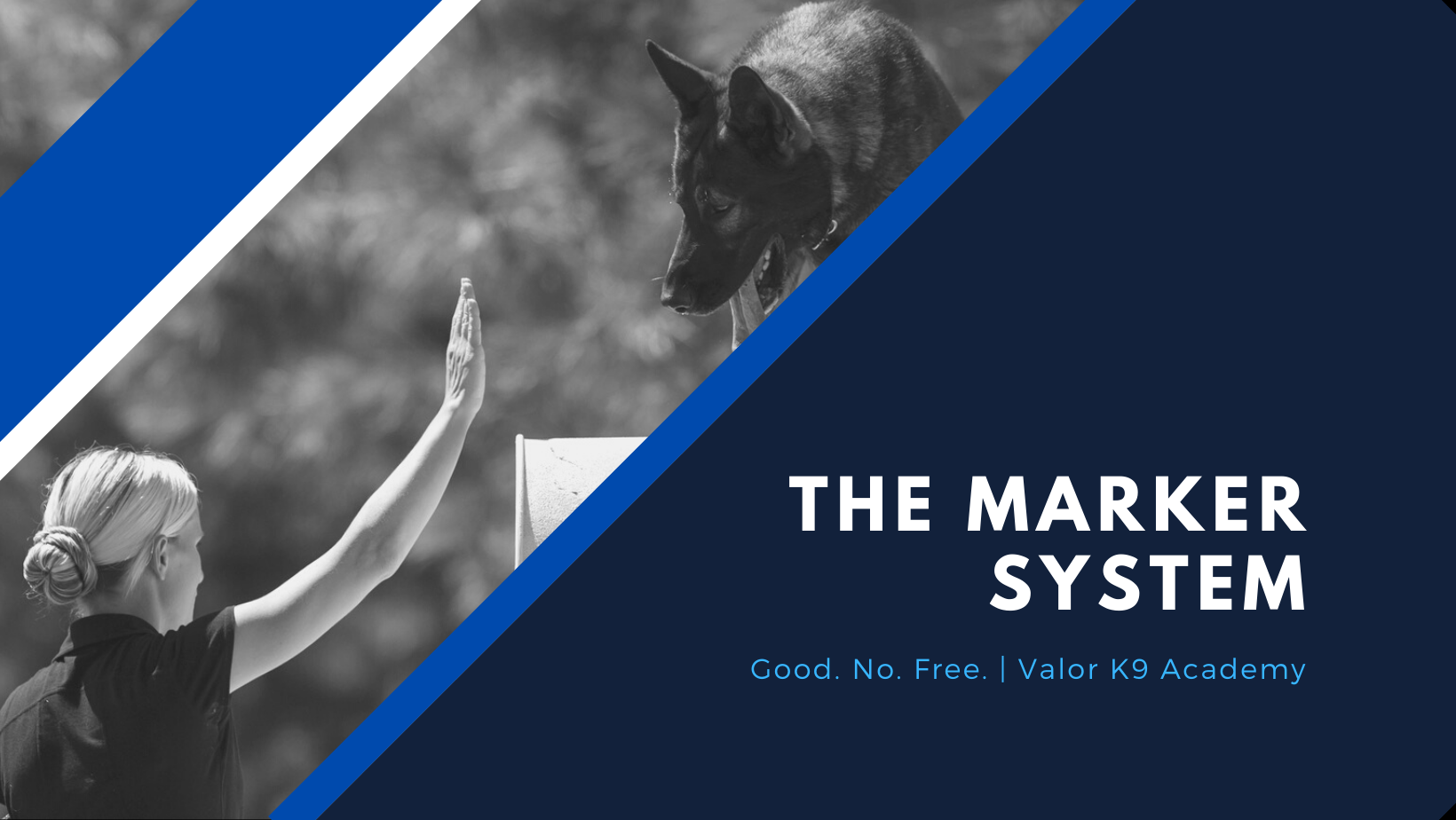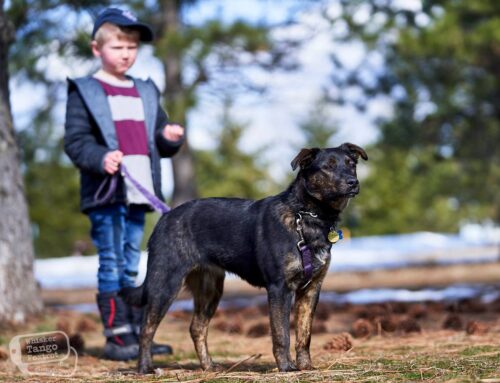What are marker words?
Marker Words use words or sounds to communicate or signal to the dog that he is doing something correctly or incorrectly and to release the dog from a behavior. The words or sounds mark a specific moment in time when the dog performs an action or behavior. It is feedback for the dog in its simplest form. Verbal markers clear up and improve communication in training and streamline the training process.
We use classical conditioning to teach marker words. For optimal conditioning, mark the behavior then follow-through within .5 to 2.3 seconds; one second is ideal.
Our three marker words
We use three basic marker words: Good, No and Free.
1. Good is a reward marker. It means “That was correct, you’re doing a good job, keep doing what you’re doing.” The “Good” marker is followed by a reward (+R) initially every time then some of the time. Initially the reward is food. As the dog advances in training, food can be replaced with praise and affection.
2. No is a corrective marker. It means “That’s not what I want” or “That’s not what I asked for.” It signals to the dog that his behavior was incorrect and to either fix it or try again. You will follow through with a correction (+C) which can be via slip lead pressure, a prong collar pop or e-collar stimulation, then restate the command if needed. As your dog advances in training, if he self-corrects when you say No, you can choose to correct him or not.
3. Free is our release marker. Free means “You are released from what you were doing” and implies “Come to me for a reward.” To teach Free you say “Free,” then step back, then reward the dog. Initially the reward is food; later it can be praise or affection.
A few notes
Markers should be said the same way each time without emotion. Emotion makes things foggy and makes the dog feel he must interpret the marker. The goal is to say the marker the same way each time without variations.
The biggest mistake we see in marker training is referred to as layering – when the marker and the reward/correction are given at the same time. Classical conditioning requires one thing to happen then the next, but not both at the same time. Ideally, you want to:
Mark the behavior + pause + follow through (+R, +C, release)
Repetition is key to successful conditioning. It takes approximately 120 quality repetitions for something to be conditioned in a dog’s mind. Once your dog understands markers, better communication is established for the duration of your training journey.
Happy Training!







Leave A Comment